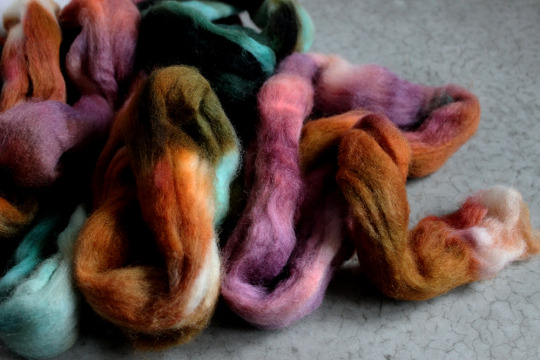#yarnstories podcast
Text
Fast Fiber Facts Part Two: Protein Fibers
We’re back with another round of Fast Fiber Facts with Miriam Felton, a designer, blogger, and the voice behind the Yarnstories Podcast.

photo by Hannah Thiessen
Protein Fibers
Silk comes from the cocoons of the silk worm. Whether the silk is considered Tussah (aka Wild Silk) or Bombyx (aka Mulberry) depends on what the worms eat and effects the color of the finished silk. Bombyx silk worms are fed only mulberry leaves, and the resulting silk is white, and very strong. Tussah silk worms feed on mostly oak leaves and their silk is colored as a result. Muga silk comes from a slightly different breed of silkworm that comes from the Assam of India. Once the silk worms spin their cocoon, they are boiled to break down the sticky stuff that holds the silk strands together. Each cocoon is made of one continuous strand of silk! So as the cocoons are broken down, you basically unravel them like little balls of yarn. Silk is one of the strongest natural fibers. Alternately, you can make a lower grade of silk by waiting until the silk moth breaks out of the cocoon, and then pulling it apart. But like a moth-eaten ball of yarn, you end up with lots of smaller pieces, and broken ends.
Goats breeds and fibers are as varied as the personality of the goats they come from. Angora goats produce mohair. Kid mohair comes from the baby goats (called kids) in the same way that lambswool is the first shearing of a sheep. The first coat is generally finer fibers, with a softer hand. Goats are also the source of Cashmere. Cashmere is classified by the micron count rather than the breed of goat that it comes from, but the goats that have been bred for fine fibers are often called Cashmere goats. Cashmere is the downy undercoat that the goats produce to keep themselves warm. If the cashmere is harvested by combing, the guard-hairs are left in place on the goat, but if the cashmere is harvested by shearing, then the guard-hairs must be removed.
Camelids are a big group including camels (their downy underlayer is soft and warm), llamas, alpacas, vicuña, and guanaco. The fiber from these camelids ranges in thickness, softness, and colors, but it’s mostly warm and drapey. The really great thing about it is all the natural colors it comes in. It can be a little tricky to work with when it’s by itself (since it doesn’t have any bounce and has a tendency to hang heavy, but in a blend it can bump up softness, drape, and shine.
Yak, Bison (aka Buffalo), and Qiviut all come from similar animals. They all come from the downy undercoats of the fiber beasts. It is all very very warm. A thin layer of qiviut is enough to keep you warm in arctic winters, so unless you live within spitting distance of either pole, you may prefer something of a blend.
And now we come to sheep. Sheep grow fleece like we grow hair, but from all over their torsos. They’re sheared 1 or 2 times a year (depending on the breed), and they produce a fiber that runs the whole range of crimpy to curly, and silky to sticky. There are so many breeds of sheep and variations from animal to animal that you could spin or knit your whole life and never try every iteration. I must admit, I’m very biased in favor of wool. Wool resists absorbing water (and is downright waterproof with its natural coating of lanolin), and once it does finally absorb water it will stay warm and feel dry. It will keep you warm when you are cool, and keep your cool when you are warm, It’s odor-resistant and sustainable. When you add the easy-care that the superwash process brings to wool, I really can’t think of any situation when wool wouldn’t be suitable for a project. Wool also works beautifully in blends with all these other fibers.
If you’d like to learn more about the yarns you love before they reach your hands, please do check out YarnStories Podcast, or subscribe in your podcatcher of choice. You can check out Miriam Felton’s patterns on Ravelry, and my tutorials on her site and on YouTube.
#knitting tips#crochet tips#fiber facts#protein fibers#animal fibers#wool#miriam felton#knitcrate#yarnstories#yarnstories podcast
4 notes
·
View notes